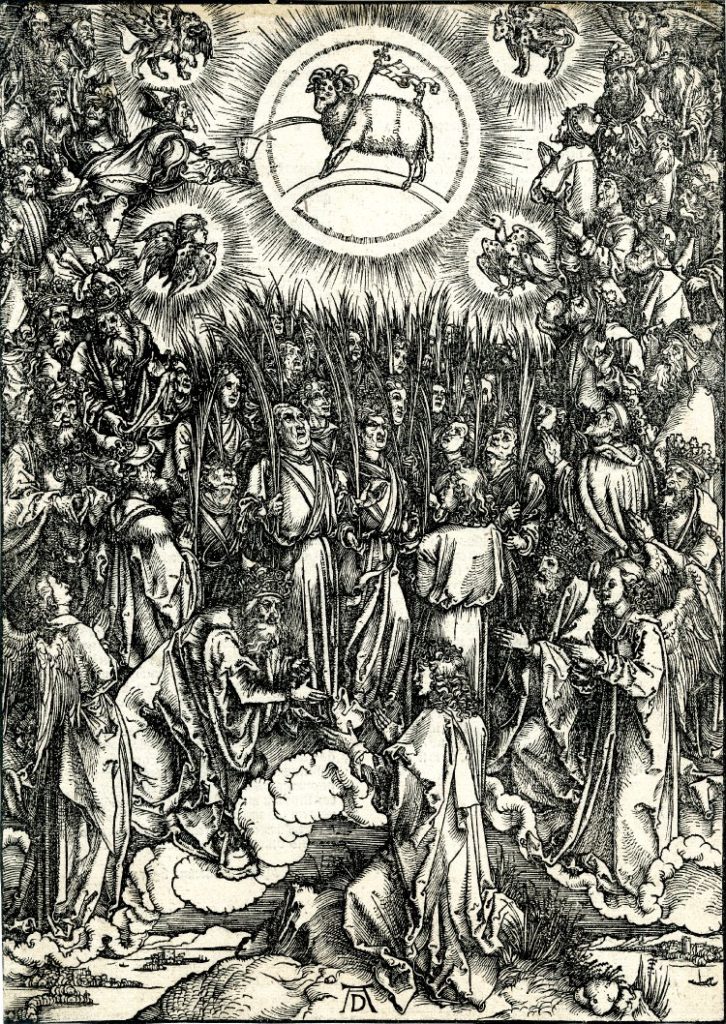For All the Saints

The summer has passed, and we’re headed full speed ahead toward the festival half of the liturgical year. But before we enter Advent, the end of the Church year brings us several special holy days. Reformation Day and All Saints’ Day are just two of the late fall holidays especially beloved by Lutherans, and they happen to be right next to each other: October 31st and November 1st, respectively.
In today’s post, we’re diving into All Saints’ Day, the day on which we remember all the faithfully departed. The observance itself has evolved over the years, and we’ll discuss that more in the “Brief History” section below. For us in the LCMS, “All Saints” honors every Christian who has gone to be with Jesus, from the apostles and martyrs to the lesser-known saints who may even have been members of our own congregations and families.
In the liturgy on All Saints’ Day, it is common for the pastor to name in the prayers all who died over the course of the previous year; after each name, the bell is often tolled until the last name is commemorated followed by three bell tolls, during which people may name in their hearts all whom they love and have lost.
Naturally, this day is quite special to those who miss their loved ones. It is an occasion both for weeping and for great joy, as the Rev. David Peterson puts beautifully in this article from the Lutheran Witness: “Thus we rejoice that, while we weep, every tear has been removed from their eyes. And we weep in joy as well that soon the tears will also be removed from our eyes.”
And so in our Lutheran Churches, All Saints’ Day is a day on which we remember all of the faithful who have gone before us and give thanks to God that by his mercy he receives sinners and gives us the same hope that he gave to them: the hope of the coming resurrection.

Brief History
The beginnings of All Saints’ Day are traced back to the eighth and ninth centuries. In the early eighth century, Pope Gregory III is said to have dedicated the St. Peter Cathedral in Rome in honor of all the saints on November 1st. A century later, Pope Gregory IV standardized the Feast of All Saints, thus expanding the practice of commemorating all the saints on this day.
The “saints” these Popes—much like the Roman Church to this day—likely had in mind when they instituted this day are not quite as inclusive a group as we Lutherans generally commemorate on All Saints’ Day. In the Middle Ages, the remembrance of all saints was thought to include people of four particular categories: apostles, martyrs, confessors, and virgins. That is, All Saints’ Day was intended to remember those who had been formally canonized by the Church. In a sense, it operated as a catch-all for all of the canonized saints who did not receive their own calendar day—since there are already multiple for each day of the year! Having a general day for all the saints also alleviated the need to keep every saint’s feast perfectly.
All Souls’ Day was later introduced on November 2nd as a day to remember all other “souls, faithful Christians who were not elevated to the level of “saint.” The history here is more complicated than that, but something that we recovered during the Reformation was a more proper understanding of the distinction between All Saints’ and All Souls’—that the difference between the two days is, as the Rev. Burnell Eckardt writes, “something other than the folly of purgatory. We rejoice in the confession of martyrs unto death on All Saints, and in all the faithful departed, who are in the Church Triumphant, on All Souls.”
Nevertheless, our LCMS one-year liturgical calendar and most of our congregations lump together the remembrance of saints and souls into one All Saints’ Day, celebrated on November 1st.
Collect
O Almighty God, who hast knit together Thine elect in one communion and fellowship in the mystical body of Thy Son Jesus Christ, our Lord: grant us grace so to follow Thy blessed saints in all virtuous and godly living, that we may come to the unspeakable joys which Thou hast prepared for those who unfeignedly love Thee; through the same, Jesus Christ, Thy Son, our Lord, who liveth and reigneth with Thee and the Holy Ghost: ever one God, world without end. Amen.

Lessons
Epistle
Gospel
Resources
Issues Etc. interview with the Rev. David Peterson on All Saints’ Day
Propers found in Daily Divine Service Book: A Lutheran Daily Missal, edited by the Rev. Heath Curtis
References:
1. Voragine, Jacobus de. The Golden Legend: Reading on the Saints. Vol. 2. Translated by William Granger Ryan. Princeton Press. 1993.
2. Pfatteicher, Philip H. Festivals and Commemorations. Fortress Press. 2008.
Images:
1. Apocalypse, Albrecht Dürer, Germany, 1498.
2. Adoration of the Lamb, Jan van Eyck, Netherlands, 1432.
3. All Saints, Fra Angelico, Italy, c. 1420.




[…] traditions for All Saints Day are numerous! Many are what we would now see as Halloween traditions – those that originated […]